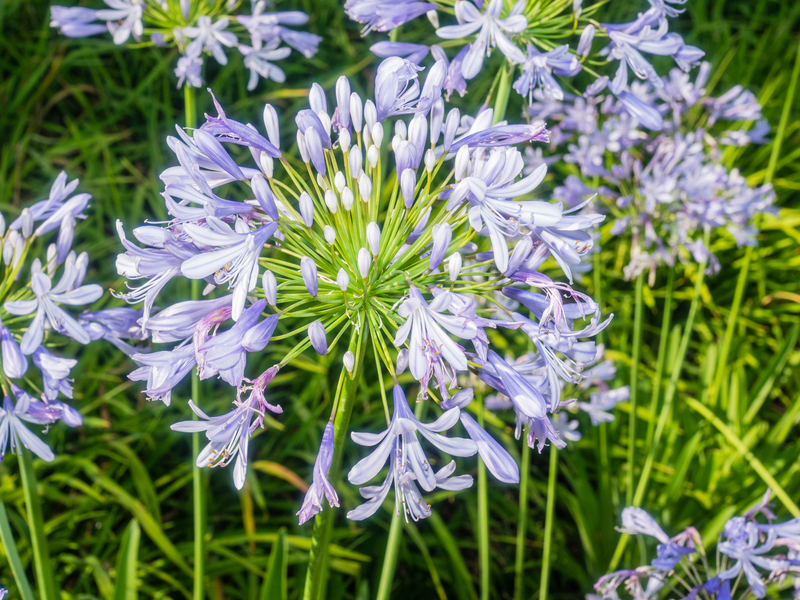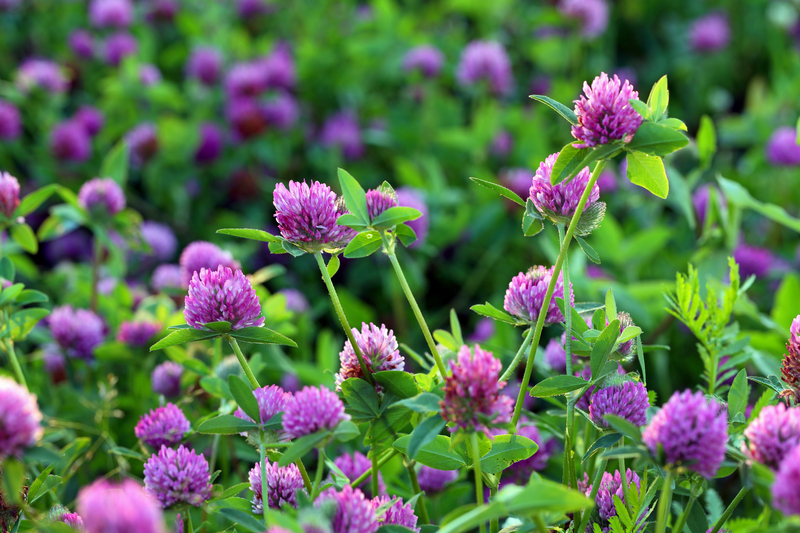Create a Versatile Garden That Moves With You: The Ultimate Guide to Portable and Adaptive Gardening
Imagine cultivating a lush, thriving garden that isn't tied to one location. Whether you're a renter, frequent mover, or someone who craves gardening flexibility, a versatile garden that moves with you allows you to transform any space into a green sanctuary -- and take it with you wherever life leads. In this comprehensive guide, you'll discover how to create a portable, adaptable garden using clever strategies, container solutions, and modern gardening principles. Let's dive into the world of mobile gardening!
Why Choose a Garden That Moves?
People across the world are embracing versatile, transportable gardens for numerous reasons:
- Urban Living: Many city dwellers don't have access to permanent land. Balcony, rooftop, or patio gardens that can be picked up and relocated offer green relief.
- Renters and Frequent Movers: Renting doesn't mean you have to give up gardening! A garden that moves with you means your investments in plants, pots, and tools are never lost.
- Climate Flexibility: Plants in movable containers can be shifted to follow the sun or shade, or taken indoors in extreme weather, extending their lifespan.
- Personalized Spaces: Mobile gardens provide endless adaptability to refresh your space, accommodate special events, or optimize according to changing needs.
_No matter the size of your dwelling or how often you change addresses, a moveable garden adapts to your lifestyle and keeps you connected to nature._

Essential Elements for a Mobile Garden
Creating a garden that moves with you starts with smart planning and the right equipment. Take note of these vital components:
1. Container Selection
- Planters with Handles: Look for containers designed for transport, such as those with sturdy handles or wheels.
- Lightweight Materials: Choose pots made from plastic, resin, or fabric grow bags -- they're easy to move even when filled with soil.
- Self-Watering Planters: These minimize the risk of spills during transit and keep your plants hydrated.
- Holder Racks: Rolling caddies or tiered stands make it effortless to relocate groups of plants together.
2. Soil and Fertilizer Choices
- High-Quality Potting Mix: Use lightweight, nutrient-rich potting soil optimized for containers. Avoid using heavy garden soil.
- Slow-Release Fertilizers: These require less frequent application and reduce mess when moving containers.
- Moisture Retaining Amendments: Coconut coir or water-absorbing crystals help keep soil damp, reducing watering needs.
3. Plant Selection for Portable Gardens
- Compact, Dwarf Varieties: Choose plants bred for small spaces, such as miniature roses, cherry tomatoes, herbs, and dwarf fruit trees.
- Resilient Species: Hardy plants tolerate frequent relocation, variable light, and humidity changes.
- Edibles & Ornamentals: Combine veggies, fruits, herbs, and flowers for a balanced, beautiful mobile garden.
- Seasonal Swaps: Design your moveable garden using seasonal annuals that can be easily changed out throughout the year.
Step-by-Step Guide: How to Create a Garden That Moves With You
Step 1: Assess Your Space and Needs
Start by evaluating the size and nature of your current space. Are you gardening on a balcony, patio, windowsill, or shared rooftop? Consider:
- Sunlight: Different plants require varying amounts of sun. Portable containers allow you to chase the sun as the season shifts.
- Climate Conditions: Know your local weather -- can containers stay outside all year, or will they need to be moved indoors?
- Transport Requirements: If you plan to relocate often, choose lightweight, shatterproof containers and plants that handle disturbance well.
Step 2: Choose Your Containers Wisely
Invest in quality containers that match your needs:
- Wheeled Pots: Larger trees or shrubs can reside in wheeled pots for easy maneuverability.
- Stackable or Modular Containers: Vertical gardens or stackable bins save space and can be separated for transport.
- Grow Bags: Soft fabric bags are ultra-light and can be collapsed flat for moving.
- Rail Planters or Window Boxes: These make great use of railing or window ledges -- and are easy to pack up.
Step 3: Select the Best Plants for a Portable Garden
Not all plants handle movement equally well. Focus on varieties that adapt well to container life and tolerate shifting light and humidity:
- Herbs: Mint, basil, parsley, chives, oregano, and thyme thrive in portable pots.
- Salad Greens: Lettuce, arugula, spinach, and microgreens grow rapidly and don't mind being moved.
- Dwarf Tomatoes and Peppers: Many small varieties are bred for containers.
- Compact Flowering Plants: Marigolds, pansies, violas, petunias, and zinnias offer color without taking up much space.
- Trailing and Climbing Plants: Nasturtium, sweet peas, or small beans can travel with portable trellises.
Step 4: Create Microclimates and Mobility Features
- Movable Shade Cloths: Protect plants from harsh midday sun using pop-up screens or shade nets.
- Portable Greenhouses: Small, collapsible greenhouses keep plants safe during travel or extreme weather.
- Saucer Trays and Reservoirs: Prevent spills when moving plants by using trays or pots with built-in water reservoirs.
- Temporary Grow Lights: Clip-on grow lights ensure plants thrive in low-light rental spaces.
Step 5: Plan for Regular Care and Easy Moves
Moving with a versatile garden requires organized care:
- Grouping: Group similar plants to simplify watering and sunlight adjustments.
- Routine Checks: Inspect for root-bound plants, pests, or soil dryness after every move.
- Labeling: Label containers for quick reassembly after transport.
- Protect in Transit: Use boxes, bubble wrap, or sturdy crates to safeguard plants during moves.
Clever Ideas for Portable Gardens
Modern gardening has ushered in several innovative solutions for easy-to-move gardens:
- Vertical Planters: Hanging pockets or wall-mounted planters are lightweight, and easy to pack up and reinstall.
- DIY Pallet Gardens: Use wood pallets to create stacked herb or flower beds that can be quickly moved or stood up in a new space.
- Portable Raised Beds: Small, raised beds with wheels or handles combine the benefits of in-ground planting with movability.
- Basket or Tote Gardens: Repurpose sturdy baskets, shopping totes, or crates as planters that are both functional and decorative.
Year-Round Tips for a Garden That Moves With You
Seasonal Relocation Advice
- Spring/Summer: Take advantage of better weather by moving containers into full sun, maximizing growth and blooms.
- Autumn: Transition sensitive plants indoors to protect from frost. Repot if roots have outgrown their container.
- Winter: Group plants together for warmth, use insulated pots, or place them near sunny windows.
Pest and Disease Control on the Move
- Inspect Before Each Move: Check for pests or diseases to avoid spreading problems to a new location.
- Natural Solutions: Neem oil, insecticidal soap, or yellow sticky traps provide portable pest control without chemicals.
- Quarantine New Arrivals: Isolate new plants for 1-2 weeks to watch for hidden pests before adding them to your collection.
The Environmental and Financial Benefits of a Mobile Garden
Investing in a garden that moves with you is both financially and environmentally smart:
- Minimize Waste: No more abandoning plants, expensive planters, or soil when you relocate.
- Lessen Your Carbon Footprint: By growing your own herbs and produce, you reduce food miles and packaging.
- Reuse and Repurpose: Many portable garden containers use recycled materials and can be reused for years.
- Save Money: The cost of gardening once -- for planters, tools, and quality plants -- can be amortized over many years and locations.
Creative Inspiration: Real-World Examples of Gardens That Move
Case Study 1: Urban Balcony Eden
Olivia, a New York City dweller, transformed her tiny high-rise balcony into a vibrant veggie and flower paradise using fabric grow bags and stacking crates. Each time she moves apartments, her garden packs into boxes, delighting her at new addresses within days.
Case Study 2: Digital Nomad's Outdoor Oasis
Mark, a tech freelancer, travels often and brings his favorite herbs and succulents everywhere. Using lightweight plastic planters and a small, roll-up greenhouse, he sets up an instant garden wherever he lands for a few months -- all it takes is a sunny windowsill!
Case Study 3: Family on the Move
The Chen family, who relocate for work every couple of years, created wheeled planters filled with strawberries, tomatoes, and perennial flowers. Moving day means rolling their home-grown produce right into the moving truck. Each new home is greened within hours.

Frequently Asked Questions
Can I grow fruit trees in a portable garden?
Absolutely! Choose dwarf fruit trees such as citrus, figs, or apples grafted onto compact rootstocks. Use large, sturdy containers with handles or wheels. Ensure they receive adequate sunlight and trim if needed for size control.
How do I move large or heavy containers?
Opt for containers with built-in wheels or place pots on rolling caddies. For very heavy planters, empty some soil or prune the plant before moving, and always use proper lifting technique or a dolly.
Are portable gardens suitable for all climates?
Yes, but always consider your local climate. In extreme cold, some plants must be moved indoors or protected with insulation. In hot, dry climates, choose plants that tolerate drought and containers that retain moisture well.
Conclusion: Embrace the Freedom of a Garden That Moves With You
Modern life doesn't have to mean sacrificing the joys of gardening. By choosing versatile, portable solutions, anyone can nurture plants wherever life takes them. From small-space dwellers to digital nomads and frequent-move families, creating a garden that moves with you offers freedom, beauty, health, and sustainability.
Ready to begin? Start with just a few containers and watch as your mobile garden grows -- upgrading every home, balcony, or window along the journey. Your oasis is always within reach!
Grow, thrive, and let your garden follow wherever you go.